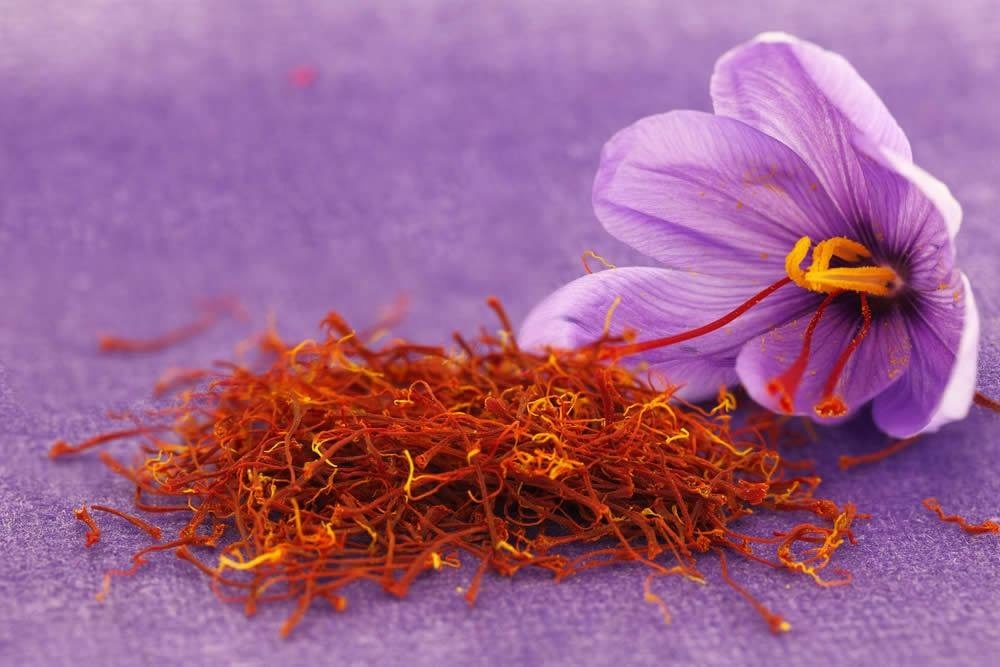Cleopatra’s Beauty Secret, 13 Towers & Tuscan Table ‘Gold’
Cleopatra’s Beauty Secret, 13 Towers & Tuscan Table ‘Gold’


Legend has it that the gods punished Crocus because of his all-consuming, but pure love for the undecided nymph Smilax. The gods turned the poor Crocus into a plant with graceful and precious flowers. The “other” more gory version says the origin of saffron is attributed to Mercury, who accidentally hit his friend Crocus while tossing a disc and in memory of his friend he dyed the plant with the blood of his dear friend, hence the namesake.
But beyond legends, October in Tuscany just happens to be the magical moment to harvest the priceless saffron, so we’d like to tease you with a bit of ‘show and tell’ about one of the world’s most precious foods.The saffron of San Gimignano is cultivated using natural methods and sold whole in crimson-red threads, instead of as a powder. In 2005, it was awarded Denominazione di Origine Protetta (DOP) certification. Cledy Tancredi, President of the Consortium of Saffron Producers, shared with us the colorful history, medicinal uses, folklore and intriguing stories one sunny afternoon outside the medieval walls of San Gimignano.

The carefully picked red stigmas of the lilac-colored crocus flower (Crocus sativus or autumn crocus) have been treasured, cultivated—and fought over—for centuries. Cleopatra used to bathe in saffron-infused water (which she claimed increased pleasure in lovemaking). Alexander the Great used it to treat battle wounds and the ancient Romans planted it across their entire empire. While the plant is native to central Asia, the spice was already well known in Italy in the Middle Ages, introduced through trade in port cities like Venice and Genoa. Today, saffron in Italy is grown most notably in Tuscany, Sardegna and Abruzzo.
We, of course, are most interested in tooting our horns around Cledy’s local prize-winning variety grown in San Gimignano—Tuscany’s saffron capital—and adored by our Ciclismo staff. Documents date saffron in San Gimignano trade routes to the 1200s, where it was treated as currency and contributed greatly to the city’s wealth. “”In fact,”” Cledy says, “”the merchants of San Gimignano in part owed their increasing wealth to the saffron sales and in turn were able to build themselves the great, tall, noble towers.”” Thirteen of those (once 72) towers remain standing in the bustling, gorgeously preserved UNESCO World Heritage site we enjoy today.
SAFFRON IN CUCINA
Pellegrino Artusi—the famed godfather of Italian cuisine and author of an early cookbook Science in the Kitchen and the Art of Eating Well —made this suggestion: “If you have a bronze mortar in the house, buy saffron in its natural state and then pound it into a fine powder and melt it in a bit of hot broth before adding the rice that you will later serve with parmesan.” This 19th-century advice is still current, but, for an even better result, just use room temperature (or slightly tepid) water.
Saffron can be used in many recipes, including desserts, and is wonderful in risotto milanese, which makes the most out of autumn’s bounty. Cledy suggests: “”Just place the stems in water at room temperature from 20 minutes to two hours and always use at the very end of cooking.”” Photo (left) by Robert Deeley.
 Cledy whips up delightful saffron dishes in her kitchen at Fortezza dei Cortesi. Photo: Robert Deeley
Cledy whips up delightful saffron dishes in her kitchen at Fortezza dei Cortesi. Photo: Robert Deeley
MEDICINE & LORE
Historically a symbol of wealth (already in ancient Rome), this ingredient in cooking was considered “gold.” It was also considered in the Middle Ages as a type of aphrodisiac and a blood thinner. It was (and is still believed) to be helpful for the woman’s cycle. Many still use it as a natural antibiotic. Local lore reveals that in the Middle Ages, the saffron color was used to tint the woman’s wedding dress and a small sash of the saffron “threads” was worn around her dress for calming purposes.


HARVEST
This autumnal plant likes the sun and blooms for a very short period in late October or early November, where it requires a speedy and labor intensive harvest. Flowers are picked very early in the morning (before they open) and the stigmas removed before the blooms wilt. Each flower contains only three stigmas.
The flower is then opened (by hand, of course) and the orange-red part is separated manually from the stigma, taking care to not remove the whitish-yellow part. Once the stigmas have been removed, they are placed in sieves or small nets, usually of stainless steel, and left near to burning embers. During this stage, the temperature must not exceed 45°C and the filaments must be constantly turned.
After drying, the stigmas acquire a brownish-red color and are ready to be packaged. Zafferano di San Gimignano DOP is made up of intact filaments (sold in small packets), with a brownish-red color and a very strong flavor. Its characteristics are attributable to three chemical components: crocin, which gives it its color; picrocrocin, a bitter glycoside which determines the flavor; and safranal, which gives it fragrance.
Luckily, as my friend Cledy says, “a little bit goes a long way!” And to impart a rich golden yellow color and just enough of its characteristic, and “bitey” flavor to food, you don’t need much. There is no sense in trying to impress people by adding extra saffron, as it will only taste bitter. Too much of a good thing can be wonderful—but it can also be a bad thing!
Get a taste of this autumn food favorite on one of our Tuscany bike tours!
{{cta(‘f828b903-3a9c-44e3-9855-36a74d909ee1’)}}
{{cta(’44f8a91d-950e-4aaf-8575-283b4d5f701b’)}}
{{cta(‘c1140cbd-aee1-490f-b3b4-c738b732b3b2’)}}
